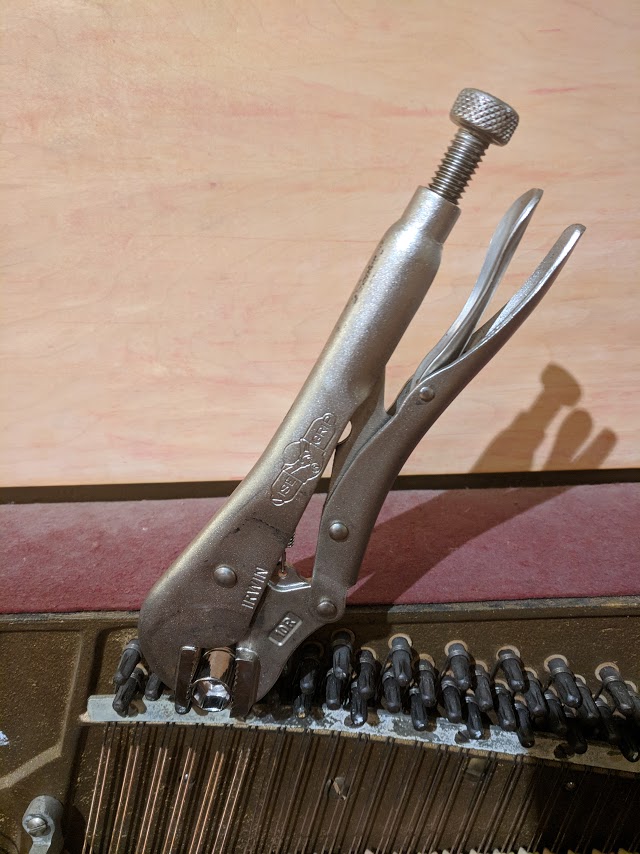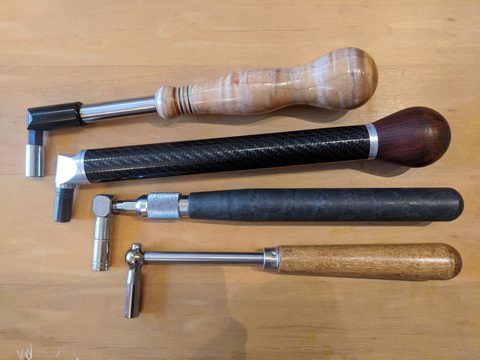Tuning Unisons
Tuning multiple strings of the same note (called a “unison”) so that their pitches match exactly takes practice. First, you must be able to hear when a unison is out of tune. If one string is tuned slightly sharp or flat of the others, you will hear a “wah-wah-wah” sound that piano tuners call “beating”. As the strings are brought closer in tune with each other, the beating slows, then stops when the strings are perfectly in tune. I recommend taking some time and simply practicing with two strings only until you can reliably hear the “beats” and make them stop.
If you don’t want to learn to tune unisons by ear, you can ignore the mute moving patterns above and use two mutes to tune “string-by-string”. This involves making sure only one string is unmuted at a time, and tuning each string directly to PianoMeter. In my experience, this ends up being a slower process in the long run, but you can achieve good results this way as well.


